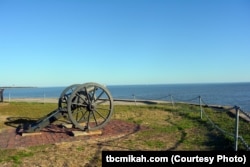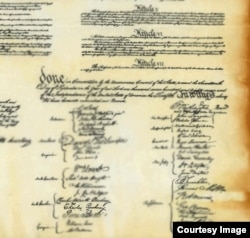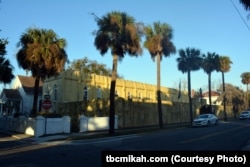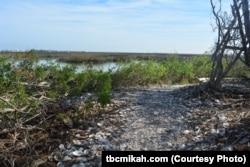American Mikah Meyer has an unusual goal. He wants to visit all of the more than 400 properties operated by the National Park Service.
He spent January 2017 visiting historic areas in the southeastern United States.
One of his first stops was Fort Sumter, a former military position in waters just off the coast of Charleston, South Carolina.
Fort Sumter is famous for being the place where the first shot of the Civil War was fired. It is also where the first person killed in the conflict died.
After years of rising tensions between Northern and Southern states, the two sides clashed in Charleston Harbor on April 12, 1861. That was when the Southern army launched an artillery attack on Fort Sumter. Federal troops surrendered the fort a short time later. Union forces eventually fought to regain control of the base, and defeated the South in 1865.
As he stood inside the large walls of Fort Sumter National Monument, Mikah Meyer looked across the water to the port at Charleston. He imagined what the area must have looked like more than a century and half ago.
“You’ll see across that bridge, Charleston, South Carolina. It was under siege at one point for 17 months. There were cannons that could fire from where I’m standing on the fort all the way to the old town…”
Meyer also visited the Charles Pinckney National Historic Site in South Carolina. There he had a chance to learn about Charles Pinckney, who helped write – and was a signer of -- the U.S. Constitution.
“Some people call him our forgotten founding father, but he was a political figure of early America who helped shape what our eventual constitution ended up looking like…”
The National Park Service helps care for what remains of Pinckney’s former home and farm. Park service workers tell the stories of 18th- century plantation life for free and enslaved people.
During his travels in January, Meyer had a surprise. Barack Obama, in his last few days as president, named a new national park site in Beaufort, just south of Charleston. It is called the Reconstruction Era National Monument.
The Reconstruction Era stretched from 1861 to 1898. It was a period when Americans struggled with the treatment of newly freed African Americans. The new national monument will help tell that story.
“So all within the Charleston, South Carolina, area you have these three sites now that are really related to either America becoming America, or America figuring out who America is…”
Driving south into the state of Georgia, Meyer stopped at Fort Pulaski National Monument. Many observers believe the creation of Fort Pulaski was a major turning point in U.S. military history.
Built in 1861, the former base is considered one of the most modern posts of its time. It had a moat, with water that surrounded the whole fort.
Just an hour’s drive south, Meyer visited Fort Frederica on St. Simons Island. He walked among the ruins of this former 18th-century settlement.
Continuing south, he visited the Timucuan Ecological and Historic Preserve in Jacksonville, Florida. He learned that a plentiful supply of oysters provided food for the Native Americans who once lived there.
Meyer noted that some areas are covered with oyster shells. Former wetlands are now walkable because the remains of shells have turned into earth. Meyer explains how oyster shells are used as building materials.
“And it’s all of these little huts that were built out of a kind of paste of oyster shells and other minerals that, when mixed together, form, you know, sort of a brick-like substance…”
Continuing down the Florida coast, Meyer stopped at Castillo de San Marcos National Monument in the city of Saint Augustine. He also stopped at another former military post, the much smaller Fort Mantanzas.
Meyer said visiting these historic places helped him recognize the many things the National Park Service does to protect national treasures for all to enjoy.
I’m Caty Weaver.
And I’m Ashley Thompson.
Julie Taboh reported on this story for VOANews.com. George Grow adapted this story for Learning English. Ashley Thompson was the editor.
We want to hear from you. Write to us in the Comments Section.
________________________________________________________________
Words in This Story
siege – n. a military blockade of a base or a city
cannon – n. a large heavy gun
plantation – n. a large farm or place where agricultural products are grown
advanced – adj. modern
brick – n. a common building material













